I’ve been gillnetting sockeye salmon in Bristol Bay, Alaska, for 20 years. For nearly that whole time there has been a sense of impending doom that some shadowy foreign entity was someday going to dig a massive, caustic mine at the shared headwaters of two of our most prolific salmon-bearing streams, threatening this food source and way of life. Over the last decade, myself, my family, and my businesses have become more and more involved in the fight to prevent that future from happening. But at one point recently I realized I didn’t actually know that landscape some 150 river miles upstream from the waters I fish every summer.
Last September, I went to see it—to hunt moose, fish for salmon, and experience the true Alaskan bush. It was even wilder than I expected.

I was joined on this adventure by Sam Lungren, an outdoors writer and former commercial fisherman who now lives in Montana. We met at a fishing trade show earlier that year when Sam was working for a hunting and fishing media company called MeatEater. He left soon after but began writing for Outdoor Life Magazine, who gave him an assignment for our crazy trip idea, giving an additional sense of purpose to the adventure.
Sam and I met up early on the morning of September 4 at the Merrill Field in Anchorage to fly to Iliamna Village. There we met Chad Hewitt—longtime bush pilot, fishing outfitter, and owner of several lodges and other businesses related to Bristol Bay tourism. He makes no bones about it: If the Pebble Mine were to happen, he too believes his livelihood would be finished. With that in mind, Chad loaded our raft and gear into his De Havilland Beaver and took off on course for the nondescript hill that allegedly holds half a trillion dollars in treasure.

The tundra stretched out black and burned below. Several wildfires torched nearly 300,000 acres of this region last summer, including Pebble’s temporary mining camp, as if to presage some possible future. We flew a ways past the site and landed on a pond on a high bench above a small stream. Chad took off as we began inflating the raft and hauling gear down the hill, leaving us alone in the wilderness for the next week or more. An old bull caribou sauntered over to get a look at us after the plane vanished over the horizon.
The weather turned cooler and wetter the next morning as we awoke for opening day of Alaska’s moose season. Sam and I climbed back up the hill to glass and call. We were shocked when, only two hours later, a big bull came striding up the other side of the valley, apparently hearing our novice cow moose wailing. We hurried down to the river to intercept him, but then he disappeared deep into a jungle of alders.

Eventually, we realized we had to scale the heavily forested mountainside to locate the massive animal. We still couldn’t find him, but finally, Sam got the bull to stand up with grunt calls. We hustled into position, me with my longbow and Sam behind with his rifle to call and back me up. I got within 10 yards of the angry moose, who was tossing vegetation with his antlers and grunting loudly but wouldn’t step into the open. Before he could catch our wind, I told Sam to shoot and he did.

We spent the rest of the day carefully harvesting the incredible meat and packing some of it to camp. The next day we returned three times for the rest of it. While we could have easily stayed put and kept hunting that area, the river beckoned.

On the morning of Day Three, we rigged and loaded the raft and shoved off. In the first deep hole, I saw a few of the sockeye salmon that evaded my net the summer prior. I caught a few stout graylings on my fly rod. Sam and I had to row madly and drag the raft a few times in the tight, fast upper reaches of the stream before it joined its other fork, where I managed to catch a brilliantly colored Coho salmon. We might have kept it to eat on our collapsible woodstove if we didn’t already have about 500 pounds of meat onboard.
We hunted a flooded swamp that night and the following morning before descending deeper into the spruce and cottonwood forest country bisected by stripes of wildfire. But we could barely see more than 100 yards and I began to lose hope of taking my first moose on this trip.
Late in the afternoon, tired from rowing hard and fly fishing for nothing, we pulled the raft off into an eddy and some flooded grass. Sam beached the boat, moose grunted a few times, then dozed off. I kept dragging my flies through the soft water, hoping to locate one of the huge rainbow trout this region is famous for, when we both sat bolt upright to the booming call of a huge moose blazing through the willows on the far bank. We all stared across the river for a long moment.
As I wracked my brain about how we could possibly get across the river and within traditional archery range, Sam quietly chambered a round in his rifle and handed it to me. As the moose turned to leave, I raised the gun, found the shoulder, and fired. Neither of us were quite sure of what had just happened.

After 20 minutes, we rowed across the river and followed muddy tracks into the woods. In a grassy glen among the Sitka spruce lay a massive chocolate brown animal. I couldn’t believe it; we had two mature bull moose.
We removed the beautiful maroon meat into game bags and added it to a new log lattice across the bow of the raft. Sam braised cubes of backstrap in butter on the woodstove in his tipi that night.
I contacted Chad Hewitt on my Garmin InReach the following morning to inform him of our success and our plan: wanting to get the meat frozen and processed as soon as possible, we were going to push hard and run the entire rest of the river that day to be picked up the following morning. He seemed pleasantly surprised by our accomplishment and said that all sounded good. Sam and I took turns rowing hard into the wind and sluggish lower tributary until reaching the much larger main drainage. We made our camp that evening in a sunlit birch grove and enjoyed one last primitive meal in the tipi.
Chad buzzed our camp around 10 a.m. as we loaded the raft and pushed off to meet him at a flooded island downstream. I went with the first load of meat and antlers while Sam stayed back to break down the raft and wait for Chad’s colleague to pick him up in another plane.
Almost no sign of human presence was visible from the low-altitude Beaver window until Iliamna and Newhalen—except for one Super Cub plane turned turtle on the tundra. Moving back toward civilization and my family, I felt a deep sense of gratefulness for this wild land below that grows the healthy, wild salmon I catch every summer and deliver to families across the country. I hoped it would stay that way.

A few short months later, the EPA announced their formal veto of the Pebble Mine under authority of the Clean Water Act of 1972. Trout Unlimited, a nonprofit partner of our business and tireless advocate for a wild, clean Bristol Bay, celebrated their long-sought victory. My friend Nelli Williams, Alaska Director for TU, said it best:
"Collective love of a special place, grit, and persistence over decades are what made this win possible,” she said. “It wasn't easy, but we set aside differences to unite against a project that threatened Yup'ik and Dena'ina cultures, the commercial fishing industry, and angling and hunting businesses. We were able to accomplish a task that initially felt impossible because we spoke up together."

AUTHOR PROFILE
Steve Kurian is a veteran Bristol Bay fisherman, and Captain of the F/V Ava Jane. Alongside his wife, co-captain, and business partner Jenn, the Kurians own and operate several outdoor-centric businesses from their hometown of Bloomsburg, Pennsylvania. Two of those businesses, Pride of Bristol Bay and Wild For Salmon, provide direct-to-consumer access to wild-caught, sustainably harvested seafood. In addition to being an owner/operator, Steve spends his time with Jenn and their two children, Ava and Tommy. As an avid outdoorsman and woodsman, Steve prefers to spend his time in the natural world chasing a new adventure.

 Wild Alaska Salmon
Wild Alaska Salmon Alaska Salmon Burgers
Alaska Salmon Burgers Smoked Salmon & Seafood
Smoked Salmon & Seafood Wild Alaska Whitefish
Wild Alaska Whitefish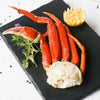 Wild Shellfish & Shrimp
Wild Shellfish & Shrimp Wild Albacore Tuna
Wild Albacore Tuna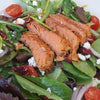 Canned Seafood
Canned Seafood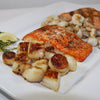 Meal Box & Samplers
Meal Box & Samplers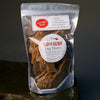 Pet Products
Pet Products Gifts
Gifts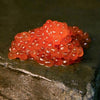 Specialty
Specialty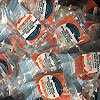 Wholesale Ordering
Wholesale Ordering
3 comments
Thank you both for your kind words on our products! It’s nice to know we have customers as passionate and dedicated to protecting Bristol Bay, as we are!
Wow what an exciting adventure! Rafting and two moose must have been a tremendous amount of work! Congratulations!
Also happy to hear about defeating the pebble mine. I have been buying your fish and products for many years! Thank you!
Great story! So thankful to all who had a part in defeating Pebble Mine, which would been one hugh disaster. Your Salmon is truly amazing. Thank you!!